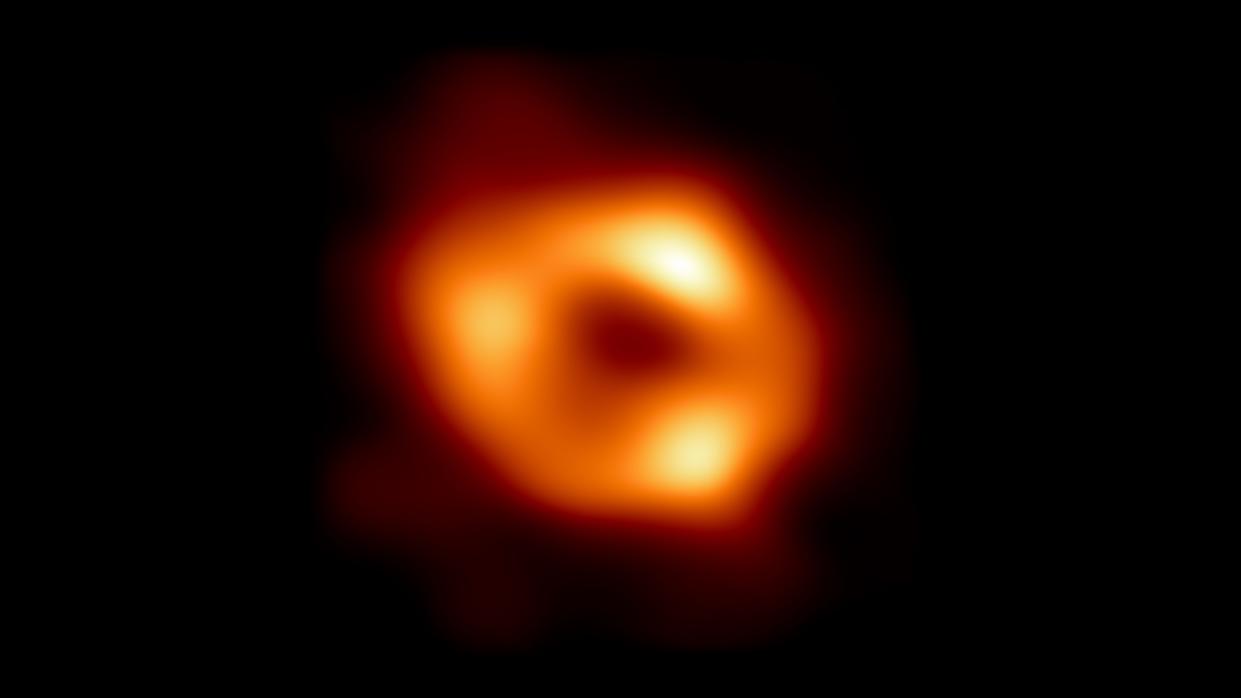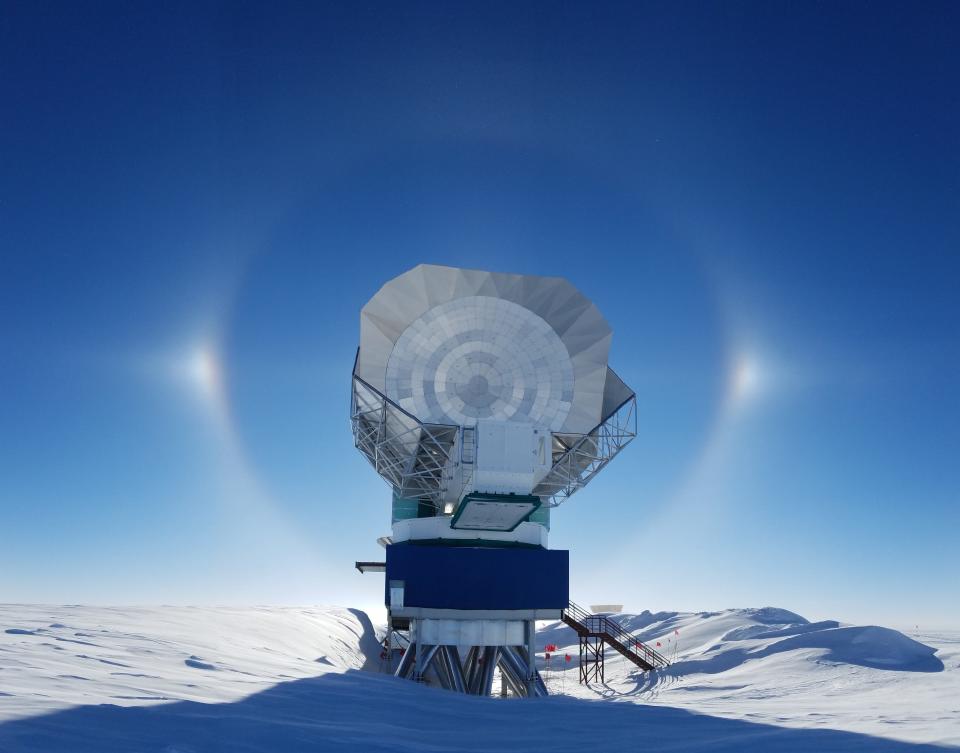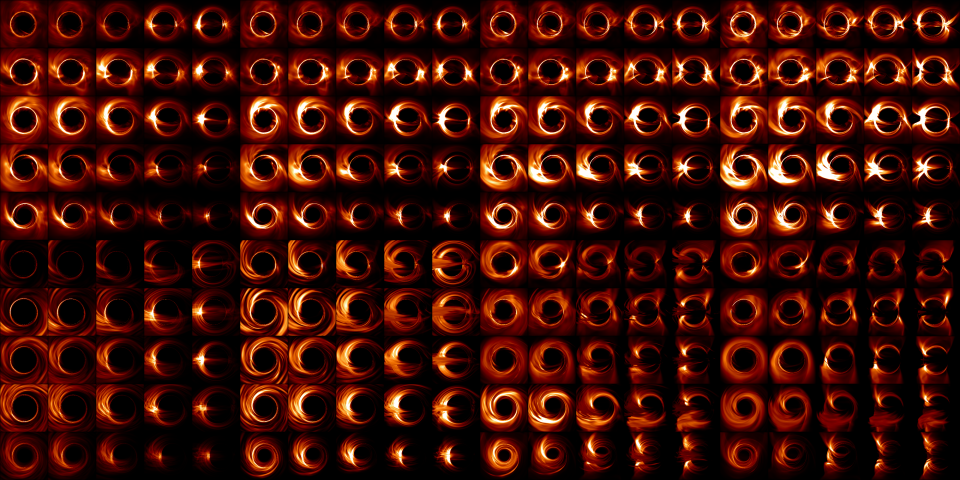University of Arizona researchers were key in creation of Milky Way black hole image. Here's how they did it

We now know what the center of our galaxy looks like, thanks in large part to the University of Arizona.
UA researchers played an instrumental role in producing the first image of the supermassive black hole at the center of the Milky Way, a groundbreaking advancement in understanding the galaxy and clear evidence that the mass there is in fact a black hole.
A global team of researchers unveiled the image Thursday, which they produced using observations and data from radio telescopes located around the world. The project, called the Event Horizon Telescope Collaboration, was launched at a 2012 meeting in Tucson.
It’s only the second direct image of a black hole, after the same research group released a picture of a further away one in 2019.
UA provided and operated two of the eight telescopes — one on Mount Graham in Arizona and one at the South Pole — that observed the black hole in 2017. Researchers in Tucson also performed years of data analysis to help produce the actual image.
UA astronomer Feryal Özel displayed the orange and black doughnut-shaped picture at a National Science Foundation event Thursday morning in Washington, D.C., as other news conferences were held simultaneously around the world. Özel is a founding member of the collaboration and spoke about the Milky Way discovery alongside researchers from Harvard and the Smithsonian, Caltech and MIT.
“Until now, we didn’t have the direct picture confirming that Sagittarius A* was indeed a black hole,” she said at the event. She called the black hole a “gentle giant in the center of our galaxy.”
A wonderful moment when we shared the image with the world. pic.twitter.com/exfGoUxTE7
— Feryal Ozel (@feryal_ozel) May 12, 2022
Sagittarius A* is the name of the massive object at the center of the galaxy, which scientists had believed was a black hole, although this is the first direct visual evidence.
It’s four million times more massive than the sun, but it’s some 27,000 light-years from Earth, so it’s tiny when viewed by a telescope, proving a challenge for the project.
“Getting to this image wasn’t an easy journey. It was one of building a worldwide telescope array and a global collaboration, one of getting and processing petabytes of data collected from those telescopes, of imaging algorithms more complex than many that have ever been developed,” Özel said.
The "event horizon" in the project's name refers to the boundary of the black hole. No light escapes beyond that point, so astronomers can’t actually see the black hole, but gas glows in orbit around it, showing its signature trait of a dark center with bright rings.
The researchers published their work Thursday in the Astrophysical Journal Letters.
‘We finally know’ what's out there

In addition to operating two of the telescopes, UA researchers did much of the heavy lifting in terms of data processing, simulations and image reconstruction.
Chi-kwan Chan, an associate research professor at UA’s Steward Observatory, led the team that made computational models to predict what the black hole would look like and how it might behave.
“We used almost all the supercomputers we could find in the U.S. and then we ran a lot of black hole simulations, and with these simulations we compared them with the observations and then we learned about the environment of the black hole,” Chan said.
Even with the strong telescope array, many of the black hole’s details were still unclear, Chan said. That’s because it’s very far away and there’s a magnetic field between Earth and the black hole.
The distance is like trying to see a grain of sand in Phoenix from Tucson, he said.
Searching for answers: Scientists want to understand the immune system. To do it, they're looking to fake space
Using telescopes around the world helped boost observations beyond what a single telescope could see. The eight telescopes acted like "a single 'Earth-sized' virtual telescope," according to the project. The telescopes observed the black hole on several nights and collected data over many hours, like using a camera's long exposure.
Once the telescopes got the data, researchers ran theoretical and computational simulations and compared the simulated images and actual observations to learn about the environment of the black hole, ranging from its spin to temperate to appearance, Chan said.
The image published Thursday is a reconstruction of the telescope observations, he said. The black hole emitted radio waves to the eight telescopes around the world, and computational methods then helped reconstruct the best possible image based on massive amounts of collected data.
The process is similar to an MRI, he said, as that medical scan is not a direct picture, but rather a collection of data and information that's then used to reconstruct an image of the part of the body.

It was a long process. Telescopes gathered the necessary information in 2017, but processing that data into the final image took years.
The orange and black image released Thursday is an average of the many images the team extracted from the 2017 telescope observations, according to the project team.
The single image was created by combining thousands of images created by computational methods based on the telescope data so it became an "averaged image" representative of the black hole.
The team got that image almost a year ago. But then it took additional work to make sure they were right.
UA graduate and undergraduate students contributed significantly to the project, Chan said.
“It’s exciting to share this with the world, to show that we actually did it,” he said.
“What we are looking at is not a random black hole in a random place in the universe — it is actually the black hole at the center of the Milky Way. So Earth is orbiting around the sun, and the sun and all the other stars in our own galaxy are orbiting around this black hole.”
Chan said this moment is like when people long ago didn’t know what the sun was and later learned through science that it’s a star.
“Now we are at that moment: we finally know what is at the center of the Milky Way.”
Global collaboration led to image
The new image is the result of five years of such collaborative work analyzing the data from the telescope observations.
"This is an exciting day for astrophysics, for the University of Arizona and for all of those fascinated and curious about our galaxy," UA’s senior vice president for research and innovation Elizabeth Cantwell said in a statement.
The Event Horizon Telescope team consisted of over 300 researchers from 80 institutes across the globe, according to UA, which was a founding partner of the collaboration.
The same international team in 2019 released the first image of a black hole, that time in the more distant Messier 87 galaxy. This one is notable because it’s in our own galaxy and it’s 1,000 times smaller and much more difficult to observe.
Now that the work has produced images of two black holes of varying size, scientists can continue to study how they are similar and different, and perhaps how galaxies form and evolve.
The collaboration continues to grow, with observation that took place in March including more telescopes than ever. Researchers plan to develop additional images, and even movies, of black holes in the future.
Have a story about higher education? Reach the reporter at Alison.Steinbach@arizonarepublic.com or at 602-444-4282. Follow her on Twitter @alisteinbach.
This article originally appeared on Arizona Republic: How the University of Arizona helped create Milky Way black hole image

